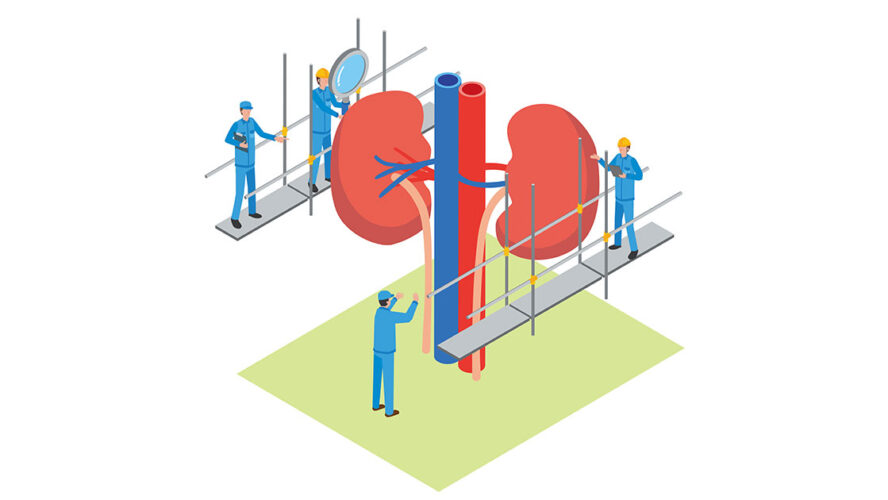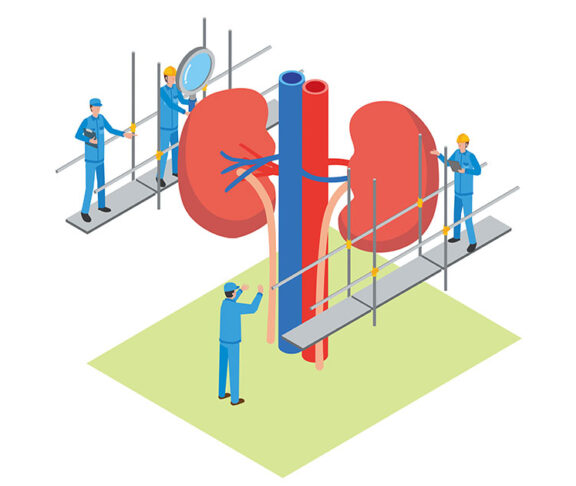With renal malignancies on the rise, patients and providers must understand evolving diagnostic tools and management options.

Arighno Das, M.D.
Urologist, MD Anderson Cancer Center

Jose A. Karam, M.D., FACS
Professor of Urology, MD Anderson Cancer Center
Renal malignancy is the seventh most common cancer in the United States, accounting for almost 80,000 new cases in 2025. The incidence of renal malignancies has steadily risen in recent decades, partially due to increased detection by using cross-sectional imaging. This has resulted in a stage shift with localized disease representing the majority of newly diagnosed renal malignancies. The most common renal malignancy is renal cell carcinoma (RCC), commonly referred to as kidney cancer, with clear cell (ccRCC) being the most common subtype. Most RCC cases are sporadic, while only around 5% are hereditary. Currently, there is no screening for kidney cancer at the general population level.
The gold standard for diagnosis of kidney cancer is contrast-enhanced abdominal imaging with either computed tomography (CT) or magnetic resonance imaging (MRI) scans. The risk of malignancy correlates with the size of the renal mass, increasing 16% for every 1 centimeter increase in renal mass size. In appropriately selected patients, renal mass biopsy can be considered and has been shown to be safe and effective with modern techniques. There has been growing interest in the use of PET-CT for the diagnosis of kidney cancer; however, this remains investigational at present.
Management decisions incorporate both patient factors (e.g., age, comorbidities, family history) and tumor factors (e.g., tumor size, location, multifocality). In early localized disease, the primary management options are mainly active surveillance (AS), thermal ablation, or partial nephrectomy.
Active surveillance
AS is a safe option in the appropriately selected patient with a clinical T1a (≤ 4 cm) renal mass. The American Urological Association (AUA) recommends cross-sectional abdominal imaging around every six months for two years with longer intervals afterward. The risk of developing metastatic disease while on AS is generally less than 2%. Studies have used a tumor size of 3 centimeters, growth rate >0.5 cm/year, and stage progression as indications for intervention.
Nephrectomy
For those undergoing immediate or deferred intervention, partial nephrectomy is the preferred treatment for cT1a renal masses whenever technically feasible. The AUA particularly emphasizes nephron-sparing approaches in patients with chronic kidney disease (CKD), multifocal tumors, hereditary syndromes, solitary kidneys, or younger patients. Multiple studies have demonstrated oncologic equivalence between partial and radical nephrectomy, and given the uncertainty regarding the risk of future CKD, partial nephrectomy should be prioritized over radical nephrectomy in the management of cT1a renal masses. The robotic-assisted approach has become the most common surgical approach with favorable perioperative and functional outcomes.
Radical nephrectomy remains an important option, particularly for larger, more complex tumors that are not amenable to nephron-sparing surgery. Per the AUA guidelines, radical nephrectomy is preferred if (1) partial nephrectomy would be challenging in experienced hands, (2) no preexisting CKD or proteinuria, and (3) normal contralateral kidney with adequate post-nephrectomy predicted renal function. A regional lymph node dissection is generally performed in the setting of suspicious lymph nodes (on imaging or intraoperatively).
Thermal ablation
Percutaneous thermal ablation is also a viable nephron-sparing alternative for appropriately selected patients (generally older and more comorbid) with tumors less than 3-4 centimeters. A variety of energy options currently exist, including cryoablation, microwave ablation, and radiofrequency ablation. While studies show comparable metastasis-free and cancer-specific survival compared to surgery, local recurrence is likely higher than with surgery.
It is crucial that patients with renal masses be evaluated by a urologist. The urologist will then use evidence-based and guideline-supported evaluation and management to determine the best course of action, ultimately providing the patient with the best quality of life and survival outcomes.

